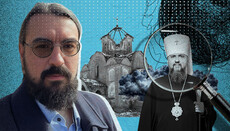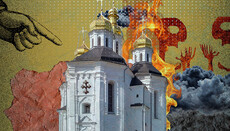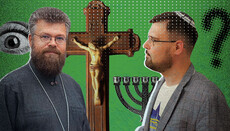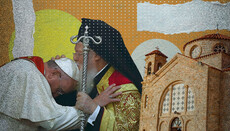From “All Universe” to “All Istanbul”: the history of Constantinople Church
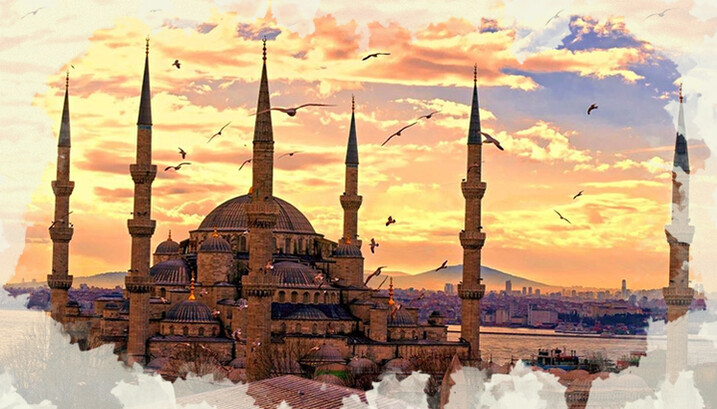
We offer to take a look at some history of the Patriarchate of Constantinople to understand the logic of the Phanar's actions not only in terms of Tomos for Ukraine.
Today in Ukraine the eyes of many church people and near-church people are directed to Constantinople.
Everyone keeps wondering if Tomos will be given or won’t be given; if the Kiev Metropolitanate will be restored or won’t be restored. The authors of publications on this subject often boast of their "one hundred percent reliable" sources among the Constantinople bishops, claiming they know not only the date of signing the Tomos but also its content and even the authors. The truth in such publications blends with fantasy, often quite boisterous. Such statements can either be denied or accepted, yet what is really interesting is to have a look at the history of the Patriarchate of Constantinople over the past several centuries and try to understand the very logic of the Phanar's actions – and not only in terms of the Ukrainian Tomos.
The Byzantine Empire ceased to exist on May 29, 1453, when Constantinople was captured by the Turks under the leadership of Sultan Mehmed II. But as early as several centuries before, the once great and powerful empire, which embraced the whole of the civilized world of that time, was confined to the territory of Constantinople itself with its suburbs, as well as several Greek islands off the coast of Asia Minor and was completely surrounded by Turkish possessions.
The last desperate attempt to save the capital of the Byzantine Empire was the Florentine union of 1439, concluded by the Constantinople bishops in the hope of receiving military assistance from the Vatican and Western European rulers. Ironically, the Greeks, selling the Orthodox faith, bought a "hole from a bagel", as neither the Vatican nor Europe had neither the will nor the opportunity to provide any tangible assistance to the Byzantine emperor in confronting the mighty Ottoman Empire.
The union then was not supported by the clergy or the people and only accelerated the end of Constantinople. In addition, it has for many centuries seriously discredited the Church of Constantinople in the eyes of the entire Orthodox world. Until now, the hierarchs of Constantinople have been approached with caution: "Will they again surrender Orthodoxy in favor of the current political moment?"
Having conquered Constantinople, Mehmed II immediately became preoccupied with the organization of ecclesiastic affairs. Despite the fact that Christians in the Ottoman Empire were significantly infringed in their rights and were considered second-class people, Sultan Mehmed pursued a policy of religious tolerance and cared for all his subjects. On his instructions, the survived bishops elected Patriarch Gennadius Scholarius. When the Patriarch was appointed, Mehmed said the words, which later became the formula for the Patriarch's investiture: "Be a patriarch, may you be lucky, and be sure of our agreeable attitude, enjoy all the privileges the patriarchs have enjoyed before you."
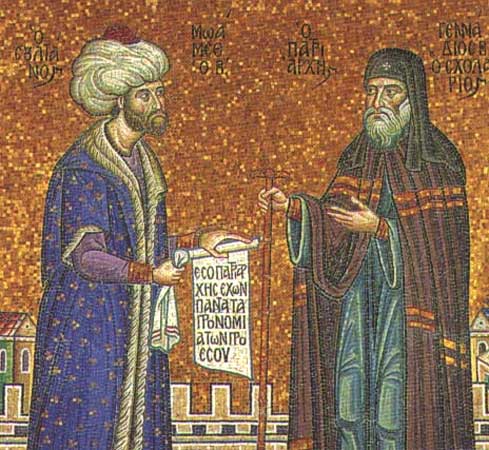
Since the main church of Constantinople, St. Sophia, was immediately converted into a mosque, the Patriarch was granted a very large but by that time already quite dilapidated temple of the Twelve Apostles as a cathedral. But here the Patriarchy did not stay long, either. Due to the fact that many Turks settled in this area and also because of the inability to renovate the church, Patriarch Gennadius was compelled to take all the sanctities and go to the monastery of Pammakaristos in the Phanar district, populated by the Greeks. The name of this area later began to be associated with the Ecumenical Patriarchate itself.
However, in 1486 the church of Pammakaristos was also turned into a mosque. The present residence of the Ecumenical Patriarch, St. George church, was built in 1601 with the money of Moscow Tsar Theodore, the son of John the Terrible.
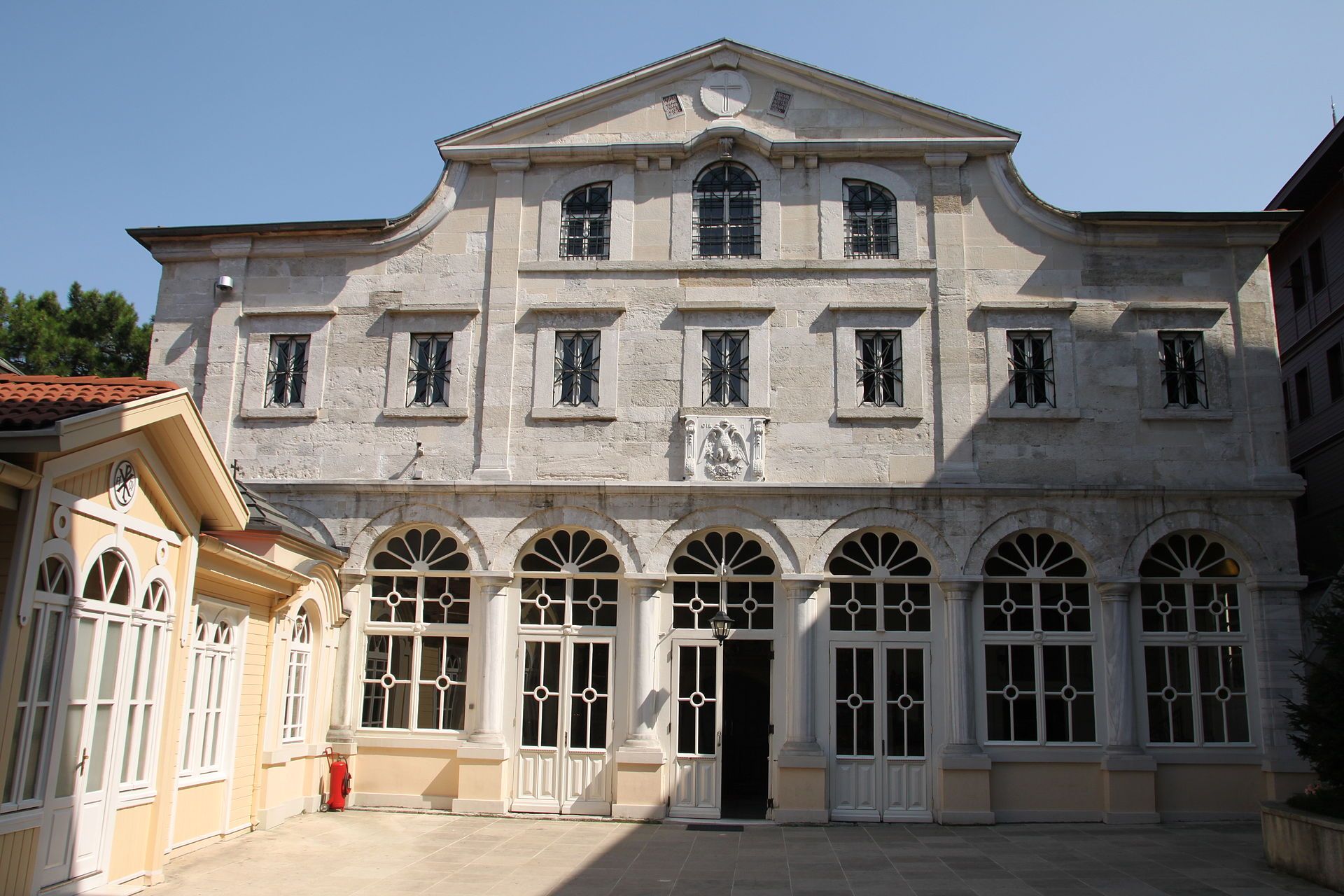
In the Ottoman Empire, the Orthodox Patriarch received much more substantial power than in the Byzantine Empire. But this power was not only spiritual but also secular, which could not but affect the moral image of the higher clergy. The Patriarch of Constantinople became the head of the Miletus, the Christian population of the Ottoman Empire. He was laid responsibility before the Sultan for loyalty of Miletus to the Turkish authorities, for their orderliness, as well as for tax collection. The higher clergy received broad judicial powers, the right to collect taxes for the Church and other privileges.
While prior to the capture of Constantinople by the Turks virtually all the metropolitanates of the Ecumenical Patriarchate were located in other states and, therefore, strongly depended on their rulers, then after 1453 not only these metropolitanates belonging to the jurisdiction of Constantinople were united under the sultan's authority but also canonical territories of the ancient Eastern Churches: Jerusalem, Antioch and Alexandria.
And since the Christian population of these territories also pertained to "rum Miletus", its head in the eyes of the Turkish authorities was also the Patriarch of Constantinople. Although the Phanariots have never tried to subordinate these Churches canonically but in fact these ancient primatial cathedras were administered from Constantinople. The Ecumenical Patriarch presented to the Sultan candidates for the episcopal chairs of these Churches, as well as for the Church of Constantinople. He could also initiate their removal from the posts. From this order of things, which has existed for more than half a millennium, the policy of affirming the Patriarchate of Constantinople as the "Mother Church" for all others follows. This explains the desire of today's Constantinople hierarchs to confer some exclusive powers on the Phanar, including the right to bestow autocephaly or the right to act as a supreme court in the event of conflicts between Local Churches.
The Ecumenical Patriarch presented to the Sultan candidates for the episcopal departments of the ancient Eastern Churches, as well as for the Church of Constantinople. He could also initiate their removal from their posts. From this order of things, which existed for more than half a millennium, follows the policy of affirming the Patriarchate of Constantinople as a "Mother Church" for all others.
The Patriarchs of Constantinople were approved in their office by sultans via issuing special orders – fermans that confirmed their patriarchal powers. The sultans demanded considerable sums from the candidates for the throne for fermans, which the Patriarchs later collected from their bishops, as well as demanding money for the enthronement. Over time, the Turkish authorities discovered a very good source of additional revenue through issuing fermans and, therefore, used to dethrone patriarchs at every opportunity to immediately have a new candidate and charge money from him. The pretext for the overthrow of patriarchs could be any denunciation and any slander that, as a rule, came from other candidates for the patriarchal see.
The first Patriarch under the Turkish rule, Gennadius Scholarius, despite his high authority based on high scholarship, prayerful mood, lack of greed, as well as firmness in the Orthodox faith, was compelled to abdicate in 1457.

The reason was accusations that the Patriarch allowed young people to marry under 12 years old. This really contradicted the canons but it did not come from a good life. The fact is that a married boy could no longer be taken to the janissary corps and converted to Islam. The Janissaries were the most devoted to the Sultan and the most merciless warriors in the Turkish army. The historical memory of so many nations has preserved the legendry of their cruelty. The fact that Patriarch Gennadius saved such boys from the fate of their conversion from Christians into bloodthirsty beasts, was not interesting to his opponents, the main thing was to clear the way to the patriarchal pulpit.
Corruption, probably, is the greatest evil that began to penetrate the environment of the higher clergy of the Patriarchate of Constantinople immediately after the beginning of the era of Turkish rule. The point is that the entire system of power, built in the Ottoman Sultanate, was based on corruption and bribery. And the Patriarchate, which became part of this administrative system, inevitably assimilated all its vices. For instance, let us cite the history of the occupation of the patriarchal throne by the direct successors of Gennadius Scholarius.
After his first abdication in 1457, Gennadius first headed to Athos and then to the monastery of St. John in Serah. He was followed by Isidore II, who died in 1462. After Isidore the Patriarch was Joasaph, who had a dispute with the famous scientist George Amirutsis, who was respected by the Sultan for his scholarship. Amirutsis wanted to marry the widow of the Duke of Athens despite the fact that his own wife was still alive. Patriarch Joasaph refused to give a blessing to such a marriage falling prey for this reason to such intrigues that he even tried to commit a suicide but was saved.
In such circumstances, Patriarch Gennadius was summoned from his monastic seclusion and in 1464 held his office for several months in order to restore some order in the Patriarchate. After him, Mark Xylokaravis became patriarch in the beginning of 1465. But the election of Mark was very disappointing to another contender for this place, Metropolitan of Trebizond Simeon. For a year, he collected a sum of 2,000 golden pieces (half of which was a loan) and bribed the ministers of the Turkish government, who ordered the Synod of Constantinople to dethrone Mark and enthrone Simeon. Having learned about it, stepmother of sultan Mehmed stepped in, named Mary, who was a Christian. She also collected 2,000 golden pieces and demanded that both Patriarchs, Mark and Simeon, be dethroned in favor of her protégé Dionysius, which was done as she’d wished.
A few years later, Simeon collected another 2,000 golden pieces – the amount that had already become a conventional price of the patriarchal throne. In 1471, he accused Dionysius of allegedly being kidnapped by the Turks when he was a child and converted to Islam. Dionysius gave the Synod undeniable evidence of the falsity of these accusations – yet the Synod was interested in the money rather than the evidence. Dionysius was deposed and Simeon took his place again. But this patriarch could not be on the throne for long. In just three years another candidate appeared, Raphael, who was of Serbian descent. This bishop made a record-breaking proposal to pay 2,000 golden pieces not for the Holy See each year. The Synod again obediently removed Simeon and made Raphael patriarch. Three years later, in 1477, the sultans ordered to remove Raphael and appoint another protégé of his stepmother, Maxim III Manassis.
The Holy See was taken during all subsequent centuries in approximately the same fashion. During the existence of the Ottoman Empire, the Patriarchate of Constantinople was led by 159 patriarchs, 109 of whom were dethroned, 27 renounced themselves, 6 were killed, and only 21 patriarchs died their own death while being on the arch-see. There were cases when the patriarch served for a few days and then was overthrown. The famous Patriarch of the 17th century Kirill Lukaris was appointed for this post seven times!
During the existence of the Ottoman Empire, the Patriarchate of Constantinople was led by 159 patriarchs, 109 of whom were dethroned, 27 renounced themselves, 6 were killed, and only 21 patriarchs died their own death while being on the arch-see.
Another factor being directly related to the corruption of the Constantinople hierarchy was the excessive participation of secular people in the affairs of the Patriarchate. The Greeks quickly adapted to life under the Turkish rule and adopted the established norms. In addition to integrating into the administrative system of the Ottoman Empire, they were successfully integrated into its economic system. Traditionally, the Turks were not inclined to entrepreneurship and trade and let occupied nations engage in it: primarily the Greeks, as well as Jews, Armenians and Syrians.
The Greeks found themselves in a very advantageous position: they had always been skilled navigators and therefore, began to control soon almost all the sea trade in the Turkish possessions. This was facilitated by the fact that the Turks, fearing the strengthening of Genoa and Venice, ousted their merchants from this profitable market. As early as a hundred years after the conquest of Constantinople, very rich merchant families came to the fore among the Greek population of the Empire. Cantacuzenas, Gika, Rosetti, Mavrokordato, Chrysoskulis, Ypsilanti and other surnames that rose during this period would influence both the policy of the state and the Church for the coming centuries.
These people, who earned their capitals on trade, began to call themselves "archons" (i.e. chiefs - Ed.) of the Greek people. And since the Church of Constantinople was a symbol of national unity of the Miletus, proximity to the higher hierarchy was considered an indispensable attribute of the high social and financial status of such families. Therefore, the archons tried to build their houses on Phanar as close to the residence of the Patriarch as possible, as well as to arrange their sons for positions in the Patriarchal Chancery.
Members of these families soon began to be called "phanariots" – a term that today has lost some of its original meaning and denotes more clergy that serves in the Patriarchate of Constantinople. Initially, they were rich laymen who lived in the Phanar district near the Patriarch. Given the need to pay huge sums for any appointment to the Patriarchate, up to the patriarchal throne, candidates for the arch-see among the clergy used to borrow necessary funds from these wealthy families, thus becoming financially dependent on them.
But the domination of rich laymen in the affairs of the Patriarchate had its positive aspects. The archons could defend the clergy and the Church as a whole before the Turkish authorities, pay for the maintenance and repair of churches, help Greek schools and so on. For several centuries their activity prepared the necessary basis for the struggle of the Greeks for independence and their own state.
Today, the tradition of widespread participation of the laity in the administration of the Church is especially notable in the American Archdiocese of the Patriarchate of Constantinople, the main metropolis of this Church. Here, the rights of the laity are even enshrined in the Archdiocese's statute, and despite the fact that the hierarchs of Constantinople are very unhappy with this state of affairs, they cannot do anything about it.
The next trouble of the Constantinople Church under the Turkish rule was a catastrophic situation with theological education as it was, indeed, with education in general.
Higher educational institutions in Constantinople, Thessaloniki, Mystra and Trebizond were doomed to disappear after the capture of these cities by the Turks. The only higher school that escaped disappearance was the Patriarchal Academy. But it was in decline due to the lack of qualified teachers. Almost all the scholars and professors went to Italy and other countries where they felt more secure than under the rule of the Turks, and where their labor was paid much higher. The center of Greek scholarship was Venice and Padua, where many Greeks were educated or employed as teachers. But here they were confronted by the danger of another kind – the temptation of Catholicism. The transition to this religion opened up very wide opportunities for the Greek scientists, and many Greeks in Venice and in the West in general made a good career at the cost of renouncing the faith of their fathers. Furthermore, in 1577, Pope Gregory XIII founded in Rome, specifically for the Greeks, the College of St. Athanasius, where they were taught scholasticism and Catholic theology.
To the credit of the Greeks, it should be noted that not all of them were converted to Catholicism. Frequently the instruction in Latin higher schools gave them the opportunity to defend the Orthodox faith, using the methods and techniques they had learned in these schools. Such Orthodox theologians wrote various treatises against the Latins and Protestants and polemised with them in the language of scholasticism and logical reflection they could understand. But there was another much hidden danger. Theology was Orthodox but it was set out in Latin, using Latin outlines, the Latin conceptual apparatus and Latin arguments. Orthodox patristic theology receded into the background, or even was unfamiliar to Orthodox scholars of the time. This dependence of Orthodox theology on Latin schemas and the conceptual apparatus was later realized as the "Latin captivity" of Orthodox theology which has not been eliminated to the present day.
The state of decline of the education of the Greek clergy was eloquently described in 1555 by Martin Kraus, a teacher of the Greek language in Tübingen, who was associated with the Greek intelligentsia: "Throughout Greece, science does not flourish anywhere. They do not have public academies and professors, except for the very elementary schools in which boys learn to read the Hours, Oktoih, the Psalter and other liturgical books. But among priests and monks, people who really understand these books are truly few."
The decline of education among the Greek naturally opened up opportunities for Catholic missionary work in the Ottoman Empire. The Latins, Jesuits in particular, opened their schools on the territory of the empire; tuition fees were very affordable even for the poor. In 1635, the Latins even managed to open a school on Athos, which, however, existed there only 6 years and was transferred to Thessaloniki under the pressure of the Turkish authorities.
However, despite all the painful and sometimes even tragic circumstances of the existence of the Constantinople Orthodox Church under Turkish rule, it was able to accomplish its main feat – to survive! Despite all the temptations of Latinism, it was able to preserve the Orthodox faith. Despite the decline in education, it was able to preserve Orthodox theology. Despite corruption and bribery, it was able to preserve the system of church organization and management. Despite oppression by the Turkish authorities, it was able to prevent its flock from becoming Muslim.
The main merit of this feat of survival belongs to the Greek people, the parochial clergy and monasteries. The priests would prefer to remain illiterate rather than go to receive education in the West. Some educated people preferred to refuse reading books altogether than to study those works of Latin and Protestant authors who were in demand then. Greeks preferred to pay huge taxes and wear special clothes of second-class people (to look different from Turks) than to accept Islam. The main merit in preserving the Church belongs to grass-root Greek peasants, who despite all their illiteracy, poverty and lack of rights, would persist in staying loyal to the faith of their fathers. The Greek people in the Ottoman period sparkled many saints, among them being Cosmas of Aetolia (1714-1779) – activist of the Greek enlightenment, Venerable Nicodemus of the Holy Mountain (1749-1809) – Athonite monk and theologian, St. Nectarius of Aegina (1846-1920) and many others.
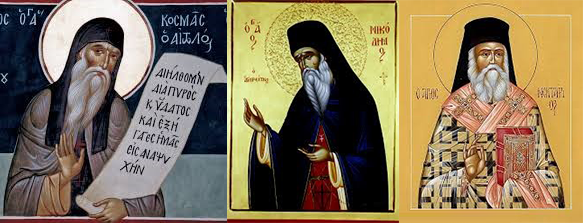
As a result of the national liberation war of 1821-1829 there was established the Greek state, independent of the Ottoman Empire. During the Greek uprising, the Ecumenical Patriarchate was in a very ambiguous position. On the one hand, liberation from the Turkish yoke was an age-old aspiration of the entire Greek people and could not but find sympathy among the higher clergy. But on the other hand, the Patriarch and the Synod were Turkish officials responsible for the loyalty of the Greek to the Turkish authorities. The then Patriarch Gregory V could not force himself to condemn the insurgents and was hanged with another two metropolitans and twelve bishops.

Since then the situation of both the Constantinople Church and the Greek population of Turkey has deteriorated significantly. The Turks suspected them of sympathizing with the neighboring Greek state and oppressed them in every possible way. In 1850 the Ecumenical Patriarch Anfim IV recognized the autocephaly of the Hellenic Orthodox Church.
The defeat of the Ottoman Empire in the First World War led to its disintegration. On October 29, 1923 the Turkish Republic was proclaimed, led by Kemal Ataturk. In the same year, there was an exchange of people between Turkey and Greece. One and a half million people were moved to Greece. Thus, the Patriarchate of Constantinople lost virtually all of its flock in the territory of Turkey. Despite the fact that Istanbul was excluded from the agreement on the exchange of population and the Greek living there were allowed to stay, their number in the former capital of the Byzantine Empire also significantly decreased. As of 2006, there were fewer than 3,000 Greek Orthodox in Istanbul, and only 250 were studied at the Greek school, many of them had poor proficiency in Greek.
The policy of the authorities towards the Patriarchate of Constantinople changed significantly in comparison with the Ottoman period. The Patriarch was no longer the head of the Miletus (in fact, there was practically no Miletus either), and did not perform any administrative functions. The Turkish authorities do not recognize his universal status and consider him the spiritual leader of a small group of Orthodox in Turkey. At the same time, the Ecumenical Patriarchate throughout the whole history of the Republic of Turkey has been given a clear message – it is redundant here. So, in 1955, with the connivance of the Turkish administration, there was the so-called Istanbul pogrom, in which 16 Greeks (including two priests) were killed, some of the few remaining temples were destroyed, houses and other buildings were burnt.
In 1996, in the main temple of the Patriarchate of Constantinople, the church of St. George, a bomb was blown up. In 1971, the Turks closed the only theological school on the island of Halka. As Patriarch Bartholomew of Constantinople has repeatedly stated, "Turkey has been waging a psychological war against the Ecumenical Patriarchate."

To date, the hardcore of the Ecumenical Patriarchate is the Greek diaspora in America, Australia and Western Europe. The Phanar has special relations with the American Archdiocese in the United States. As a result of several waves of Greek migration to this country in the 20th century, a very large diaspora was set up there. For several decades, the American Greeks have managed to develop their business in the United States, to acquire (or increase) significant capital.
It can be said that contemporary "archons" reside namely in the USA, which, like in the Ottoman period, dispose of considerable financial resources and, like then, seek to influence the clergy of the Patriarchate of Constantinople. The Greek diaspora in the United States also has a significant political influence, as many successful Greeks today occupy prominent posts in the US administration and state apparatus. On the one hand, this allows them to ensure protection to the Patriarchate of Constantinople before the Turkish authorities and to finance its existence. On the other hand, it gives an opportunity for American political circles to influence the decisions made at the Phanar.
What conclusion can be drawn from this historical background?
As in the history of any other Church, in the history of the Patriarchate of Constantinople one can find examples both of holiness of the ascetics of the Church and unworthy behavior of its individual hierarchs.
Stephen Runciman, an English historian of the last century, wrote: "The Greek, as a rule, neglect the history of their ancestors under the Turkish domination. They are mistaken in this; of course, there is much that the Greek do not like to remember, but this history testifies to the courage and invincible vitality of the Greek nation and about the spiritual strength of the Holy Orthodox Church."
Does this history give the Patriarchate of Constantinople any privilege of primacy among the other Local Churches today? Does it empower the Phanar to solve their internal problems?
Everyone will answer for themselves.
